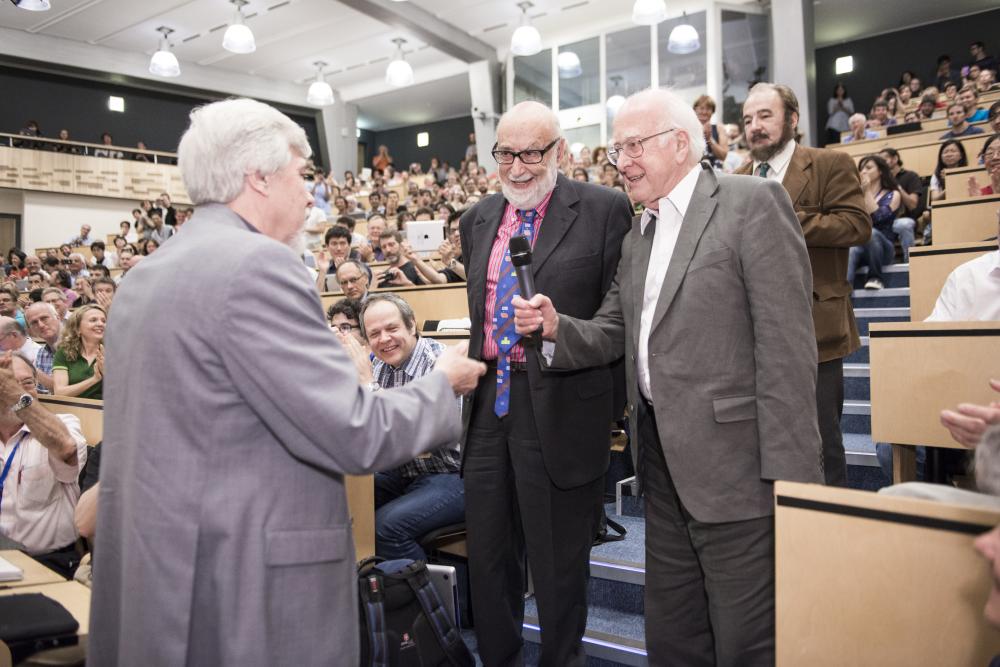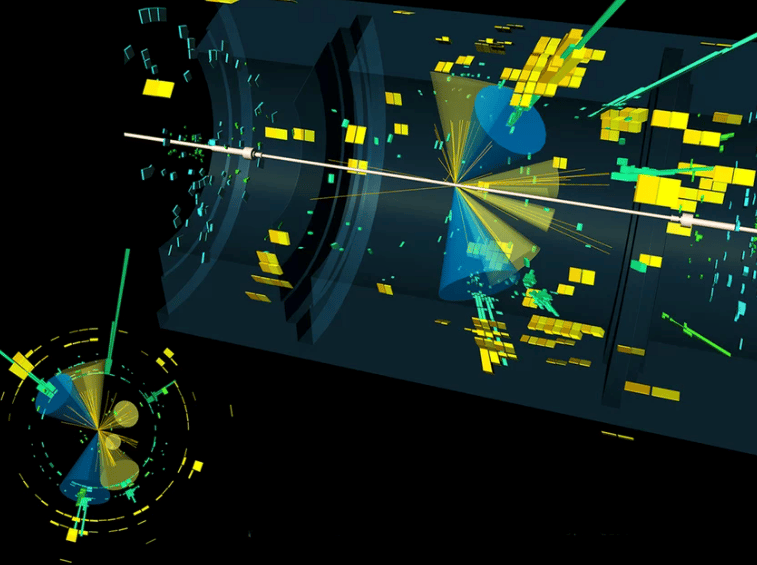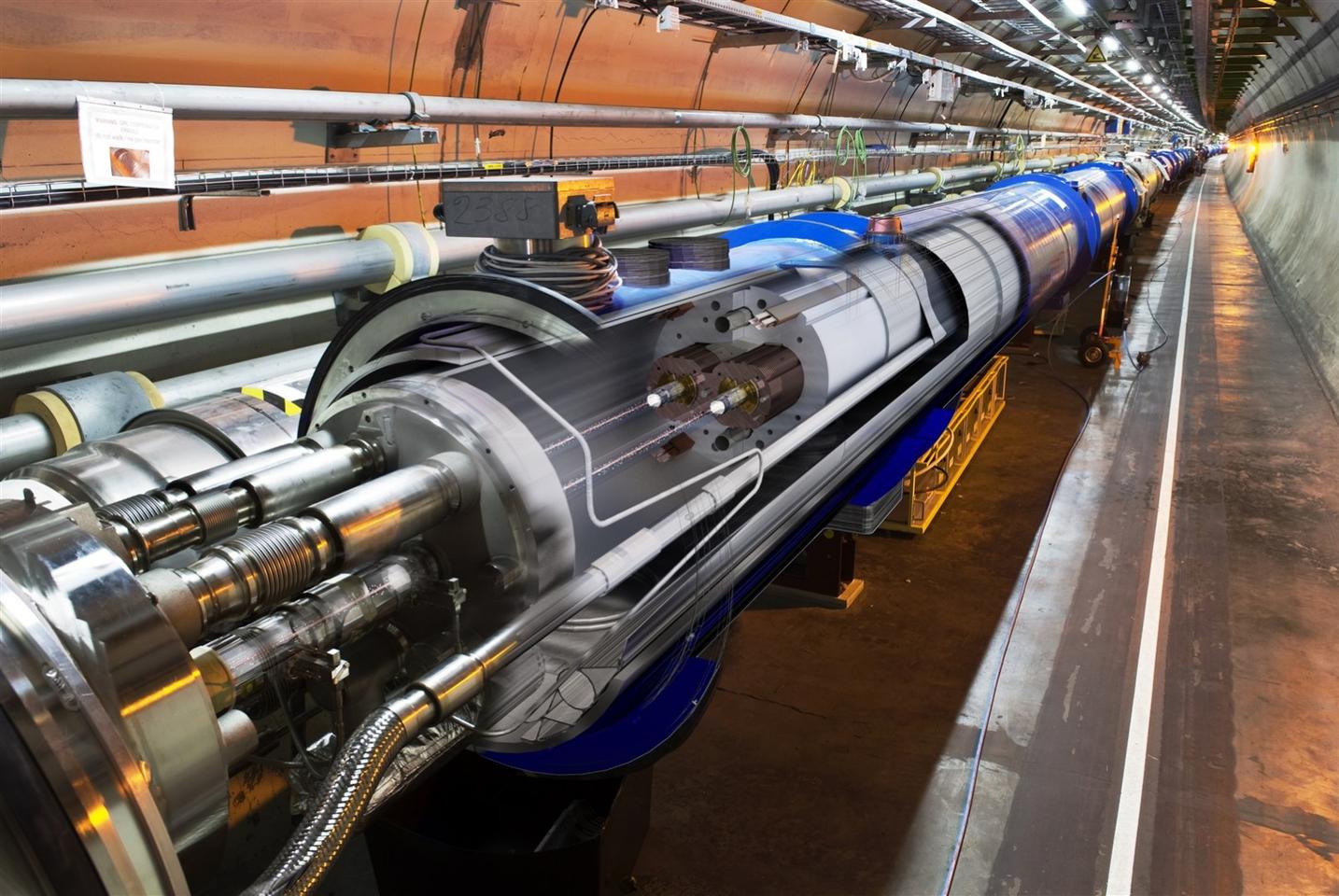This month marks the 10th anniversary of the discovery of the Higgs boson, a true “Holy Grail” of science that had eluded detection for almost 50 years. But what exactly is this particle, and why is it so important? What has it taught us in the decade since its discovery – and more importantly, what could it teach us in the next decade?
The Standard Model of particle physics predicts that the universe is made up of 12 elementary matter particles, four force carriers and one final particle that holds it all together – the Higgs boson. For a long time, the Higgs was the final missing piece of the puzzle, which was a problem because without it, the rest of the picture didn’t make sense.
Its existence was first predicted in the 1960s by its namesake Peter Higgs, and independently by the team of François Englert and Robert Brout. The physicists had been working to answer the question of how elementary particles gain their mass, and calculated that it occurs as they interact with a quantum field that pervades the universe. This model predicted that the so-called Higgs field would also give rise to its own particle, and the concept of the Higgs boson was born.
Predicting it was one thing, but actually finding it was another. The model indicated that the Higgs boson would decay into other particles almost instantaneously, giving scientists a very tiny window to observe it. To make matters worse, the mass of the particle could be anywhere from 10 to 1,000 Gigaelectronvolts (GeV). As such, the search was considered impossible for decades.
The discovery

CERN
It wasn’t until the 1980s that technology finally caught up. Physicists realized that Higgs bosons could be created by smashing particles together at high speeds, and although they would vanish quickly, their signature could be spotted by looking at the resulting particles for those that the Higgs might decay into.
Even with a series of particle colliders running at increasing power, the Higgs boson still evaded detection for the next few decades. It wasn’t a total washout though – each null result helped narrow down the range of possible masses, so that during the early years of CERN’s Large Hadron Collider (LHC) it shrank to between 115 and 130 GeV.
Attention was particularly focused around 125 GeV, where LHC teams had noticed an excess of events consistent with the Higgs boson. CERN expected that the data would “definitely give an answer” by the end of 2012 – confirming either the Higgs boson’s existence or non-existence, once and for all.
And sure enough, on July 4, 2012, particle physicists announced the historic discovery of the Higgs boson. The data from two independent CERN teams, ATLAS and CMS, converged on the same conclusion – they’d found a new particle with a mass around 125.3 GeV and several other Higgs-like properties.
Further experiments confirmed it was the long-sought Higgs boson, earning Peter Higgs and François Englert the 2013 Nobel Prize in Physics for the original theoretical discovery.
As exciting as the announcement was at the time, it’s often reported that the Higgs boson has become rather “boring” since then, as it hasn’t unveiled any wild new physics. So what has it been up to in the decade since its discovery?
The decade since

ATLAS/CERN
For the first few years, scientists scrutinized the new particle to check if it had all the properties predicted by the Standard Model. Its spin, for instance, needed to be zero, and the way it couples to particles needed to be the exact mirror of the way it couples to antiparticles. Both turned out to be just as the model expected.
LHC experiments also confirmed one of the main predictions of the Higgs boson – that the other particles in the Standard Model gain their mass by interacting with the Higgs field. That in turn confirms the role of the Higgs in some of the fundamental forces – for instance, if the Higgs boson didn’t exist, we’d need a new explanation for things like the nuclear fusion reaction that powers the Sun.
During Run 2 of the LHC, about eight million Higgs bosons were produced, and the ATLAS and CMS teams recently released new studies based on that data. That includes how often it’s produced from different processes, which other particles it decays into and how often, and how strong its interactions are with other particles. In almost every experiment scientists threw at it, the Higgs conformed to the Standard Model’s predictions.
The decade to come

CERN/Maximilien Brice
Despite its pretty remarkable agreement with the Standard Model so far, studying the Higgs boson in more detail could be our ticket to unraveling physics that lay beyond this framework.
Take dark matter for example. Evidence suggests that this mysterious substance pervades the universe and holds structures like galaxies and clusters together with its strong gravitational influence. So far it’s evaded direct detection through experiments, mostly because dark matter rarely interacts with regular matter – but there’s a chance that the Higgs boson interacts with dark matter in a way that could finally pull it into the light.
Another strange puzzle suggested by the new measurements of the Higgs is that the universe may not be as stable as it seems. It could be currently existing in what’s called a false vacuum state, but at any moment the universe – or big parts of it – could suddenly collapse into a true vacuum state. That could completely erase all matter, or if we’re lucky, it might just rewrite the laws of nature instead.
The fact that the universe is still around suggests that it’s more stable than our models suggest, thanks to other unknown forces at play. The Higgs boson could help us uncover those forces.
It might also provide new clues to another long-standing mystery about why the cosmos didn’t destroy itself long ago. Our current models suggest that matter and antimatter should have been produced in equal amounts by the Big Bang, but if that were the case, it all would have collided and annihilated everything billions of years ago. That obviously didn’t happen, indicating that for some unknown reason a fraction more matter was created than antimatter. The Higgs could help us figure out what tipped the scales in our favor.
The answers to these profound questions could be just around the corner. The LHC fired up for its third run in early July, at higher energies than ever before. And in 2029 the facility will begin new life as the High-Luminosity LHC (HL-LHC), after a major technological upgrade that will probe deeper into physics than ever before. The Higgs boson will be a central figure in those experiments.
Sources: CERN [1],[2], Max Planck Institute, APS Physics, The Conversation
Source of Article